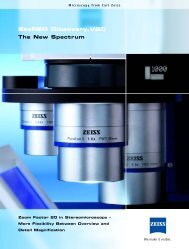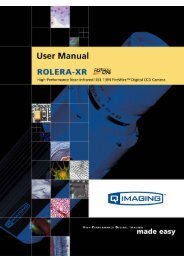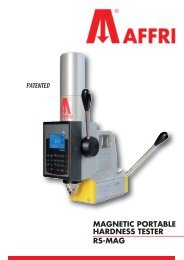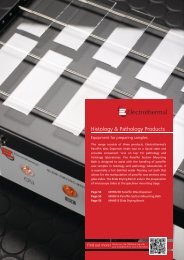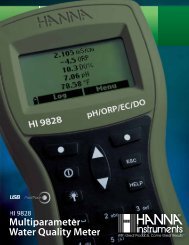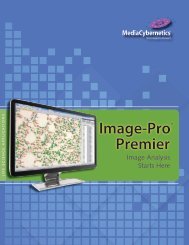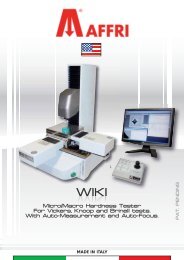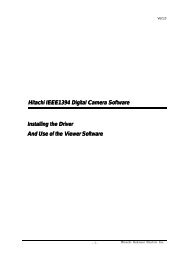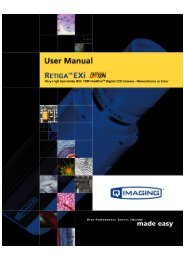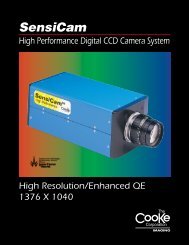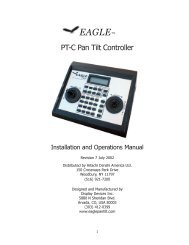INFINITY ANALYZE User's Manual - Spectra Services
INFINITY ANALYZE User's Manual - Spectra Services
INFINITY ANALYZE User's Manual - Spectra Services
- No tags were found...
You also want an ePaper? Increase the reach of your titles
YUMPU automatically turns print PDFs into web optimized ePapers that Google loves.
Release 6.0.0<br />
Lumenera <strong>INFINITY</strong> <strong>ANALYZE</strong><br />
User’s <strong>Manual</strong><br />
The Show Next command replaces the image in the active image window by the<br />
selected image in the Field Group. Note that only pictorial data are replaced and the<br />
other layers such as graphical overly are kept intact. This facilitates the comparing of<br />
multiple images.<br />
3.5.13 Panorama Landscape<br />
Use the Panorama Landscape command to stitch a row of images.<br />
The images to stitch should have been stored in Field Group, and ordered correctly. All<br />
images in Field Group participate in the operation. These images must be identical in<br />
the numbers of columns and rows of pixels and the number of color channels. The first<br />
image in Field Group should be the leftmost image of the row of images to be aligned.<br />
The last image in Field Group should be the rightmost image of the row of images to be<br />
aligned. There must be at least two valid images in Field Group.<br />
In addition, any two adjacent images must have at least 20% non-overlapping areas<br />
and at least 32 overlapping columns of pixels. The images are allowed to shift vertically<br />
but the shift has to be limited to 16 rows of pixels.<br />
A new image window will be created to hold the output panorama image. The output<br />
image copies the sampling intervals and magnification setting from the first input image<br />
from Field Group. Due to the overlapping of the input images, the number of columns of<br />
the output image would be less than those of input images summed. Due to possible<br />
vertical shift of the input images, the number of rows of the output image might also be<br />
less than that of an input image. The cropping is automatic and transparent to users.<br />
The example below illustrates the process. The first three images are stitched to create<br />
the forth image.<br />
Copyright © 2006-2011 Page 65



